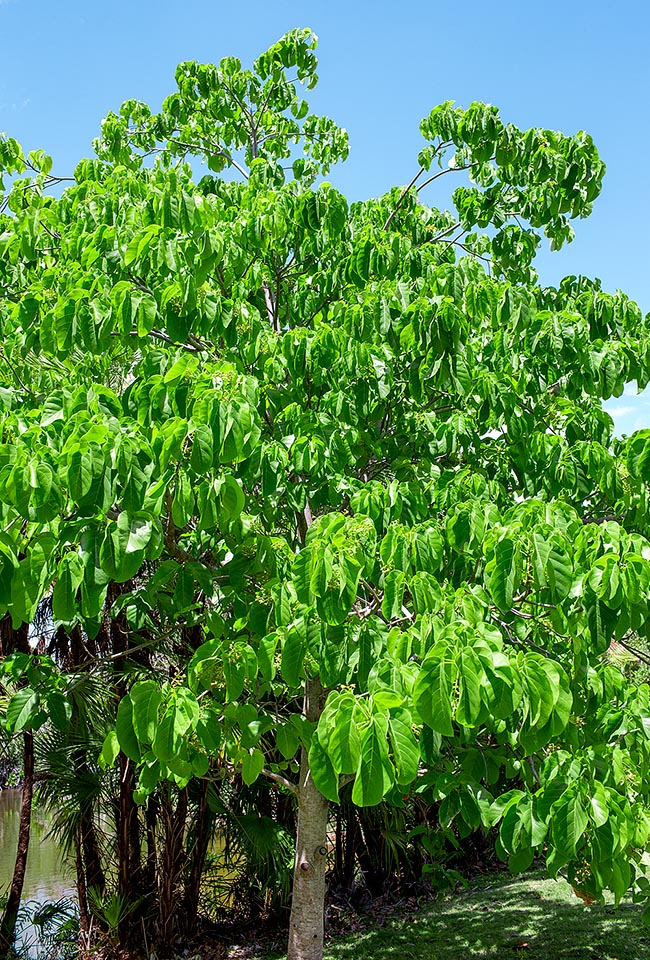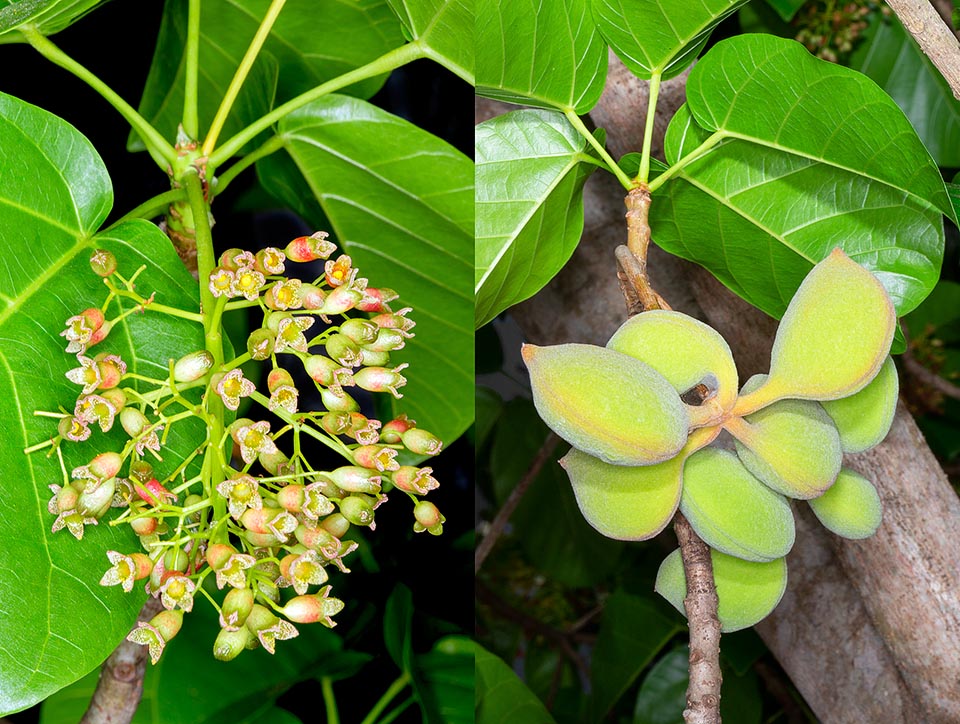Family : Malvaceae

Text © Pietro Puccio

English translation by Mario Beltramini

The Sterculia ceramica is an evergreen tree 25-30 m tall. Dense crown and trunk of 40-60 cm of diameter © Giuseppe Mazza
The species is native to Madagascar, Malaysia, Moluccas Archipelago, Philippines, Sulawesi and Taiwan where it grows in the humid forests from the sea level up to about 1000 m of altitude.
The generic name comes from the Latin “stercus” = dung, manure, with reference to the unpleasant smell of the flowers and of the leaves of some species; the specific Latin name refers to the place of origin of the type species, the island of Ceram, in the Archipelago of Moluccas.
Common names: lán yǔ píng pó, Táiwān píng pó (Chinese); anagas, balinad, balindagat, buboi-gubat, kalupang, lapnit, lontong, malakalumpang, taluto, uos (Philippines); dowong, kafialwatan, lui (Indonesia); biris (Malaysia).
The Sterculia ceramica R. Br. (1844) is an evergreen polygamous-monoecious tree, 25-30 m tall, with dense crown and greyish trunk, of 40-60 cm of diameter, that, in the time, it can form tabular roots.
The leaves, usually grouped at the apex of the branches on a 3-5 cm long petiole, are alternate, simple, ovate-elliptic with apex acute to acuminate, cordate base and entire margin, 8-20 cm long and 6-9 cm broad, of shiny intense green colour.
The inflorescences, on a 6-9 cm long peduncle, are axillar pubescent panicles, 5-8 cm long, with flowers, and an about 1 cm long pedicel, formed by the calyx alone, campanulate of yellow-greenish colour with more or less intense reddish shades.
Numerous male flowers with calyx, about 0,8 cm long, with 5 triangular tomentose lobes internally and 15 anthers.
Hermaphrodite flowers, in number markedly inferior of the male ones, with calyx, about 1 cm long, pubescent internally, ovary formed by 5 carpels and short style bent in the tip.
The fruits, in groups of 3-5, are ovoid follicles, 3-6 cm long and of 2-3 cm of diameter, scurfy-tomentose, initially green, then red when ripe, containing 3-4 oblong seeds slightly curved of glossy blackish brown colour, 1-2 cm long.
It reproduces by seed, previously kept in water for 2-3 days, placed superficially on organic draining loam maintained humid at the temperature of 24-28 °C, with germination times of 2-3 weeks.

Native to Moluccas, Philippines, Madagascar, Malaysia, Sulawesi and Taiwan, has male flowers and, in minor number, hermaphrodite flowers. The ovoid fruits, 3-6 cm long, are initially green and then red when ripe. Mediocre wood but in tropical countries this species is used as a windbreak along the coasts and as road tree © Giuseppe Mazza
Species utilized at times as road tree in the tropical and subtropical regions due to the ornamental foliage and the red fruits, it bears the strong winds, even salty, and so can be utilized for windbreak barriers along the coasts. It requires full sun and is not particular about the soil, provided draining.
The wood, straw yellow to pale brown, light, easy to work, but of mediocre mechanical qualities and duration in contact with the soil, easily attachable by the xylophagous insects, is locally utilized in the civil and naval constructions for inner parts, in the plywood industry, for veneering, cases, musical instruments and craft items of common use and artistic.
Synonyms : Sterculia richardiana Baill. (1885); Sterculia luzonica Warb. (1904).
→ To appreciate the biodiversity within the MALVACEAE family please click here.
